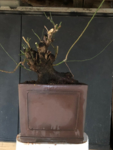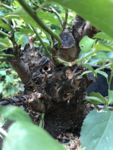Johnathan
Omono
So I know most "heavy bending" is done on conifers.... AND i know the preferred method for deciduous is chops, and clipping....
But.... just wondering.... IS IT POSSIBLE?
Nothing really extreme. Just say maybe an or inch and half thick, wrapped with vet wrap or raffia, a backbone of wiring for support, and more wire for bending. Would it be possible?
The local box store has a sale on some live oaks and kanzan cherries. I didn't get them, Obviously much to tall... I didn't want to chop and start completing over, was wondering if there was a way to get some lower movement before chopping a bit higher, hope that makes sense
But.... just wondering.... IS IT POSSIBLE?
Nothing really extreme. Just say maybe an or inch and half thick, wrapped with vet wrap or raffia, a backbone of wiring for support, and more wire for bending. Would it be possible?
The local box store has a sale on some live oaks and kanzan cherries. I didn't get them, Obviously much to tall... I didn't want to chop and start completing over, was wondering if there was a way to get some lower movement before chopping a bit higher, hope that makes sense







